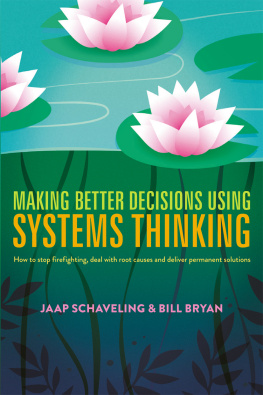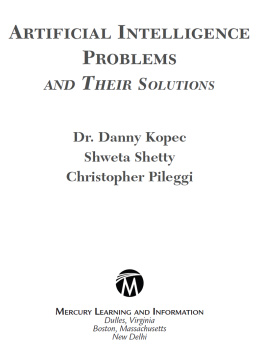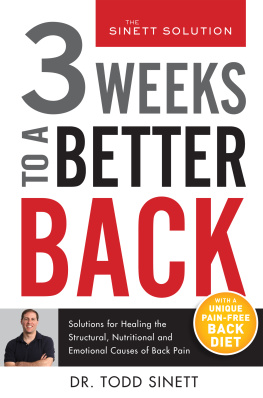Jaap Schaveling - Making Better Decisions Using Systems Thinking: How to stop firefighting, deal with root causes and deliver permanent solutions
Here you can read online Jaap Schaveling - Making Better Decisions Using Systems Thinking: How to stop firefighting, deal with root causes and deliver permanent solutions full text of the book (entire story) in english for free. Download pdf and epub, get meaning, cover and reviews about this ebook. year: 2017, publisher: Palgrave Macmillan, genre: Home and family. Description of the work, (preface) as well as reviews are available. Best literature library LitArk.com created for fans of good reading and offers a wide selection of genres:
Romance novel
Science fiction
Adventure
Detective
Science
History
Home and family
Prose
Art
Politics
Computer
Non-fiction
Religion
Business
Children
Humor
Choose a favorite category and find really read worthwhile books. Enjoy immersion in the world of imagination, feel the emotions of the characters or learn something new for yourself, make an fascinating discovery.
- Book:Making Better Decisions Using Systems Thinking: How to stop firefighting, deal with root causes and deliver permanent solutions
- Author:
- Publisher:Palgrave Macmillan
- Genre:
- Year:2017
- Rating:4 / 5
- Favourites:Add to favourites
- Your mark:
Making Better Decisions Using Systems Thinking: How to stop firefighting, deal with root causes and deliver permanent solutions: summary, description and annotation
We offer to read an annotation, description, summary or preface (depends on what the author of the book "Making Better Decisions Using Systems Thinking: How to stop firefighting, deal with root causes and deliver permanent solutions" wrote himself). If you haven't found the necessary information about the book — write in the comments, we will try to find it.
This book provides a framework to help managers go beyond simply fighting fires every day, offering the tools to address the underlying causes of recurring problems and deliver long-term solutions.
The most obvious part of any problem is the pain it causes. The desire to end the pain and find a solution any solution that will make it go away now is usually so great that it blinds managers to the underlying systemic cause of the problem. The result is that we solve the problem today and then it comes back again tomorrow or next week, again and again.
We are only addressing the symptoms but never understanding the cause like picking the flower heads off weeds but not digging them out at the roots.
Schaveling and Bryan offer the insights and tools managers and leaders need to achieve a longer term and more effective approach by stepping back and analysing the system as a whole. And at the heart of any system are human beings notoriously short-term and pain-averse creatures who will behave in whatever way minimises pain today even at the expense of pain tomorrow.They show how to detect the behavior patterns that have become engrained in the organisation and which underlie complex situations so that root causes of problems can be identified. Once the system responsible for the problem is understood smarter decisions can be made to devise interventions that solve the core problem instead of wasting energy fighting the symptoms.
Jaap Schaveling: author's other books
Who wrote Making Better Decisions Using Systems Thinking: How to stop firefighting, deal with root causes and deliver permanent solutions? Find out the surname, the name of the author of the book and a list of all author's works by series.






